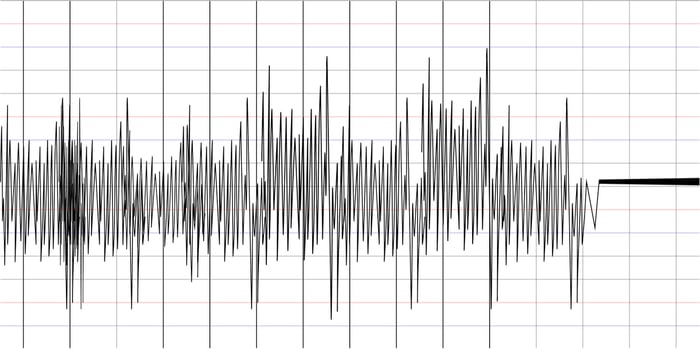Basic Principles of Seismic Design for Buildings, Part II

The seismic design procedure depends in great part on the physical properties of a building. To deliver a reliable seismic design, all factors that influence a building’s response to earthquakes must be considered.
This article describes how building features and material properties affect seismic design. We discussed general design requirements and procedures in a previous article.
Make your building design more resilient.
Seismic Design Factors
Ductility: A material’s ability to bend or deform before fracturing is known as ductility. All materials have a breaking or failing point, once their maximum strength is exceeded after considerable deformation. Non-ductile materials such as concrete tend to fail abruptly and break, and building with low ductility are more likely to crumble during an earthquake. To achieve adequate ductility in a building, it is important to design joints and reinforcements carefully.
Torsion: All objects have a center of mass, including buildings. This is the point at which the building can be balanced without any rotation. When mass is distributed uniformly, the geometric center of a floor will match the building’s center of mass. On the other hand, when mass is distributed unevenly, the center of mass will be located outside of the geometric center. As a result, uneven mass distribution causes torsion loading on the building - consider using a symmetrical mass distribution to minimize torsion.
Strength: Strength is a material’s ability to handle applied forces within a safe limit, without suffering permanent damage or failure.
Stiffness: Stiffness is a material’s resistance to deflection or drift.
Damping: Damping is the rate at which natural vibration is absorbed. Buildings should be designed to dissipate and absorb vibration as effectively as possible, preventing resonation when they experience a dynamic shock.
Building Configuration in Seismic Design
The term “building configuration” englobes all structural and nonstructural elements, such as building shape and size. The building configuration will determine how seismic forces are distributed across floors and within the structure, as well as their magnitude. There are two main configurations:
- A regular configuration consists of buildings with shear walls, moment-resisting frames or brace frames. These buildings have low height to base ratios, equal floor heights, uniform sections and elevations, symmetrical plans, short spans and redundancy, maximum torsional resistance due to symmetry, and direct load paths.
- An irregular configuration is the opposite. These structures have different floor heights, irregular mass distribution, and asymmetric floor plans and sections. Due to all these irregularities, these buildings tend to suffer from problematic stress concentrations and torsion.
To create an adequate and proper seismic design, it is important to analyze the building’s period, torsion, ductility, strength, stiffness, damping and configuration. This analysis also helps determine which devices and strategies to employ for the seismic design.

Seismic Design Strategies and Devices
Shear Walls: Shear walls are elements placed to stiffen walls, which transfer lateral forces from floors and roofs to the building foundation.
Diaphragms: Diaphragms are floors and roofs used as rigid horizontal planes, which transfer lateral forces to vertical elements such as walls and structural frames.
Moment-Resisting Frames: Column and beam joints in moment-resisting frames are designed to withstand both shear and bending, eliminating the space limitation of solid shear walls or braced frames. These column/beam joints are designed to maintain stiffness while allowing some deformation for energy dissipation. They use the ductility of steel by itself or in reinforced concrete.
Braced Frames: Similar to shear walls, they are also used to transfer lateral loads from floors and roofs to foundations. Braced frames are used when the use of shear walls is impractical.
Energy Dissipating Devices: Designing a building to be more resistant against seismic forces will increase shaking, and this may cause interior damage. Energy dissipating devices are designed to reduce shaking - energy dissipates when ductile materials deform in a controlled way. Some examples of energy dissipating devices are eccentric bracing and mobile shock absorbers.
Base Isolation: This seismic design strategy consists of separating the building from the foundation, using isolators to absorb shock. As the ground shakes, the building moves at a slower rate because isolators are dissipating a large part of the shock. For this system to work, the building must have an appropriate height to avoid overturning, while having flexible utility connections to maintain movement at the base.
- Retrofitting an existing building with base isolation is expensive. In these cases, consider using dampers instead.
- Additional space must be considered for horizontal displacement, since the whole building will move as a unit.
- Elastomeric isolators are made of natural rubber, high-damping rubber, or another elastomer combined with metal parts.
- Friction isolators are made primarily of metal parts.
Tall buildings cannot be base isolated due to the risk of overturning. Since they are more flexible than low-rise buildings, their horizontal displacement must be controlled with energy-absorbing dampers.

Keith Fink
Keith is the Franchise Brand Manager at NY Engineers, Keith is all things related to our project portfolio, brands and all things you need to know before we start your project.
Join 15,000+ Fellow Architects and Contractors
Get expert engineering tips straight to your inbox. Subscribe to the NY Engineers Blog below.


